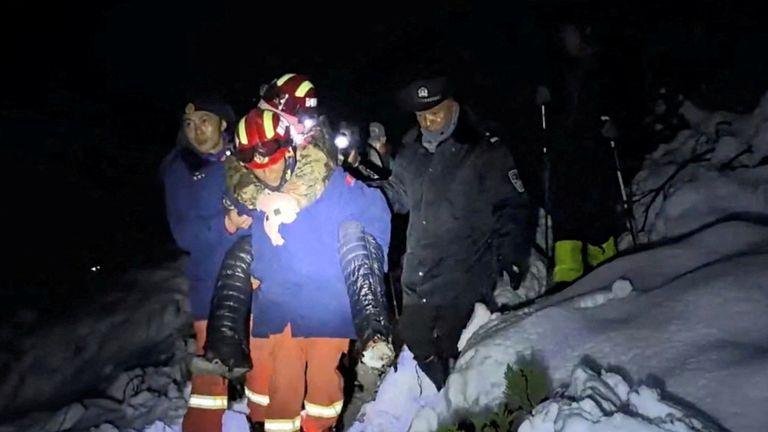Stranded Trekkers Near Mount Everest: Evacuations Underway Amid Unprecedented Weather
In a dramatic turn of events, over 200 trekkers stranded by a sudden blizzard near the eastern face of Mount Everest are currently being evacuated. This operation follows an initial rescue effort that successfully brought around 350 individuals to safety after an unexpected deluge of heavy snowfall and rain struck the Himalayas over the weekend. The situation has raised concerns about the changing weather patterns in the region, particularly during a time when October is typically characterized by clear skies and favorable trekking conditions.
Unusual Weather Patterns
The blizzard, which began on Friday and continued into Saturday, has been described as atypical for this time of year. October is generally regarded as one of the best months for climbing Everest, as the end of the Indian monsoon season usually brings stable weather. However, this year’s conditions have been anything but normal. Chen Geshuang, a member of a trekking team that successfully reached the small town of Qudang, reported, “The weather this year is not normal. The guide said he had never encountered such weather in October. And it happened all too suddenly.”
The Tibetan regional government has not yet commented on the situation, but sources indicate that the evacuation is expected to be completed by Tuesday. Those who have been rescued are currently being escorted to Qudang, located approximately 30 miles from the Everest base camp on the Tibetan side.
The Rescue Operation
The rescue operation has involved local authorities and rescue teams working tirelessly to ensure the safety of the stranded trekkers. The initial phase of the operation saw 350 individuals brought to safety, but the ongoing efforts to evacuate the remaining trekkers highlight the challenges posed by the harsh weather conditions. Eric Wen, another trekker who experienced the ordeal, shared his experience: “It was raining and snowing every day, and we did not see Everest at all.”
The Karma Valley, which leads to Everest’s eastern face, has seen an influx of trekkers recently, coinciding with a national holiday in China. This surge in visitors has made the rescue efforts even more critical, as the number of people in the area has increased significantly.
Historical Context
The challenges faced by trekkers in the Himalayas are not new. The region has a long history of unpredictable weather, which can change rapidly and dramatically. In recent years, climate change has exacerbated these conditions, leading to more frequent and severe weather events. The impact of global warming on the Himalayas is a growing concern among scientists and environmentalists, as it not only affects trekking conditions but also poses risks to local communities and ecosystems.
Historically, October has been a peak month for climbers and trekkers, with thousands attempting to summit Everest. The mountain, standing at 29,032 feet, attracts adventurers from around the globe, each hoping to conquer its formidable heights. However, the recent blizzard serves as a stark reminder of the mountain’s unpredictable nature and the inherent risks involved in high-altitude trekking.
The Human Element
The emotional toll of such experiences cannot be understated. For many trekkers, the journey to Everest is not just a physical challenge but also a deeply personal one. The stories of those who have been rescued reveal the human spirit’s resilience in the face of adversity. As they navigate the treacherous conditions, the bonds formed among trekkers and guides become crucial for survival.
The local communities, too, play a vital role in these rescue operations. Their knowledge of the terrain and weather patterns is invaluable, and their willingness to assist stranded trekkers underscores the spirit of camaraderie that often characterizes the trekking community.
Conclusion
As the evacuation efforts continue, the situation near Mount Everest serves as a poignant reminder of the unpredictability of nature and the challenges faced by those who seek adventure in the world’s highest peaks. The unusual weather patterns observed this October raise important questions about the future of trekking in the Himalayas and the broader implications of climate change on this iconic region. While the immediate focus remains on ensuring the safety of the stranded trekkers, the long-term impacts of these weather events will likely resonate for years to come.











